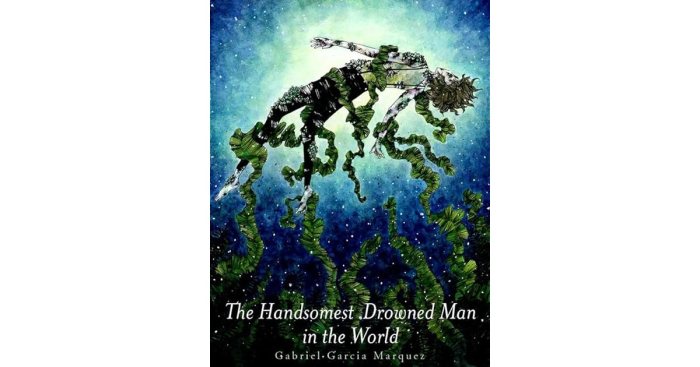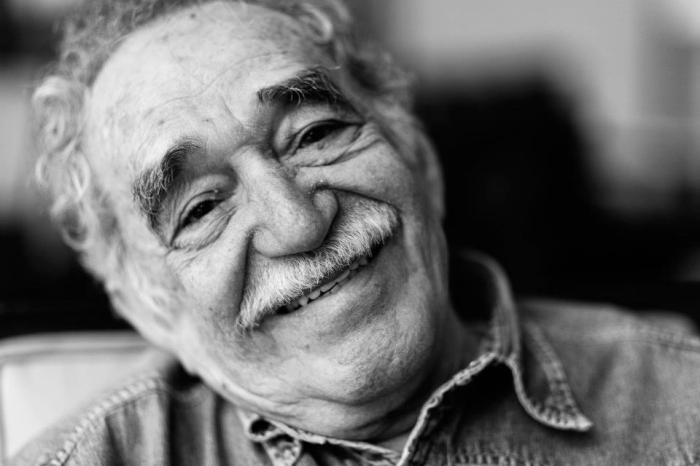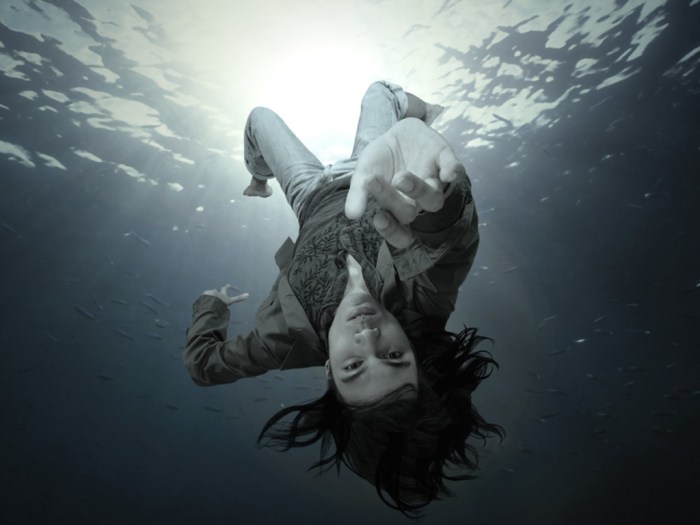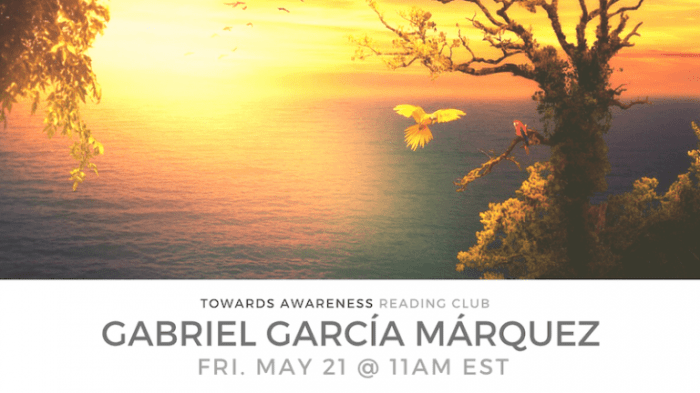El ahogado mas hermoso del mundo pdf – Commencing with the captivating title “El Ahogado Más Hermoso del Mundo” PDF, this literary masterpiece by Gabriel García Márquez embarks on a captivating journey that explores the profound themes of beauty, mortality, and the boundless power of imagination.
Through its intricate plot and evocative prose, this story invites readers to immerse themselves in a realm where reality and fantasy intertwine, leaving an indelible mark on the literary landscape.
Introduction
“El ahogado más hermoso del mundo” (“The Most Beautiful Drowned Man in the World”) is a short story by Gabriel García Márquez, published in 1968 as part of the collection “Leaf Storm and Other Stories.” It tells the tale of a drowned man whose beauty captivates an entire coastal village, transforming their lives and ultimately leading to a profound revelation.
The title of the story is both literal and symbolic. The drowned man is described as “the most beautiful man anyone had ever seen,” with a beauty that transcends the boundaries of life and death. This physical beauty becomes a catalyst for the villagers’ emotional and spiritual transformation, leading them to confront their own mortality and the fragility of human existence.
Significance of the Drowned Man’s Beauty
The drowned man’s beauty serves as a reminder of the fleeting nature of life. His perfect form, preserved in death, contrasts with the villagers’ own aging bodies and mortality. This contrast forces them to confront the inevitability of their own demise and to question the meaning of their lives.
The drowned man’s beauty also inspires a sense of awe and wonder in the villagers. They are captivated by his presence, and their lives are forever changed by his brief appearance in their midst. His beauty becomes a symbol of the power of art and imagination to transcend the boundaries of reality and to provide solace in the face of adversity.
Plot Summary
Gabriel García Márquez’s “The Most Beautiful Drowned Man in the World” is a poignant tale that explores themes of beauty, mortality, and the transformative power of love. The story unfolds in a small coastal village, where the lifeless body of a young man washes ashore.
The villagers are initially horrified by the sight of the drowned man, but their attitudes gradually change as they become captivated by his extraordinary beauty. The man’s serene expression and handsome features seem to defy death, and the villagers begin to treat him with a reverence bordering on worship.
Main Conflict
The main conflict in the story arises from the villagers’ struggle to reconcile their fear of death with their growing fascination with the drowned man. The man’s beauty challenges their traditional beliefs about mortality and forces them to confront their own fears of the unknown.
Resolution
The resolution of the conflict comes when the villagers finally accept the drowned man’s death and embrace his beauty as a reminder of the transience of life. They give him a grand funeral, celebrating his life and the beauty that he brought into their world.
Character Analysis

The central figure in “The Handsomest Drowned Man in the World” is Esteban, a mysterious and enigmatic character whose arrival in the village transforms its inhabitants. Esteban’s physical appearance plays a crucial role in shaping his identity and the reactions he elicits from others.
Transformation and Symbolism
Esteban’s transformation from a lifeless body to a symbol of beauty and hope is a central theme in the story. Initially perceived as an object of pity, Esteban’s beauty gradually captivates the villagers, who find solace and inspiration in his presence.
His transformation represents the power of imagination and the human capacity for transcendence.
Physical Appearance and Significance
- Height and Athleticism:Esteban’s tall, muscular physique symbolizes strength and virility, qualities that are admired by the villagers.
- Beautiful Face:His delicate features and perfect symmetry represent the idealized male beauty, evoking both awe and desire.
- Long Hair:Esteban’s long, flowing hair symbolizes both his femininity and his connection to the natural world.
- Absence of Identity:The lack of any identifying marks on Esteban’s body emphasizes his status as a universal symbol, representing the potential for any individual to be transformed by beauty.
Themes

The novella “The Most Beautiful Drowned Man in the World” by Gabriel García Márquez explores various profound themes through its evocative and surreal narrative.
Beauty
Beauty is a central theme in the story, depicted in its multifaceted forms. The drowned man’s physical beauty, described as “the most beautiful drowned man in the world,” becomes a source of fascination and awe for the villagers. However, the novella also explores the ephemeral and transient nature of beauty, as the drowned man’s body begins to decompose and his beauty fades away.
“His beauty was so great that it seemed to emanate from every pore of his skin, from every cell of his being.”
Death
Death is another prominent theme, present throughout the story. The drowned man’s arrival in the village serves as a constant reminder of mortality and the fragility of life. The villagers’ reactions to his death range from fear and superstition to a morbid fascination, highlighting the diverse ways in which people confront the inevitability of death.
“The whole village went to the beach to watch him drown, but they couldn’t believe their eyes when they saw him float to the surface, alive and more beautiful than ever.”
The Power of Imagination
The novella also explores the power of imagination and the transformative nature of storytelling. The villagers’ collective imagination plays a significant role in shaping their perception of the drowned man and the events surrounding his death. Their stories and myths about him become a testament to the power of imagination to create and sustain a shared reality.
“The villagers began to tell stories about him, and soon they had created a whole mythology around him. They said he was a prince from a distant land, or a god who had come to save them from their sins.”
Symbolism

The story employs potent symbols to convey its profound themes and evoke a range of emotions. The drowned man’s body, the sea, and the village’s reaction to Esteban are key symbols that contribute significantly to the story’s meaning.
The Drowned Man’s Body
The drowned man’s body represents both beauty and decay. His physical beauty captivates the villagers, yet his lifelessness symbolizes the transience of life and the inevitability of death. The contrast between his beauty and his lifelessness highlights the fragility and vulnerability of human existence.
The Sea
The sea symbolizes the vastness and mystery of life. It is both a source of life and a force of destruction. The villagers’ fear of the sea reflects their fear of the unknown and their inability to control the forces of nature.
The sea’s beauty and danger also mirror the duality of human nature.
The Village’s Reaction to Esteban, El ahogado mas hermoso del mundo pdf
The villagers’ reaction to Esteban reveals their own prejudices and fears. Their initial awe and admiration turn into suspicion and hostility when they realize that Esteban is different from them. Their rejection of Esteban symbolizes the human tendency to fear and ostracize those who are different.
Setting
The story takes place in a small, isolated village on the coast of Mexico. The village is a close-knit community, where everyone knows everyone else’s business. The villagers are superstitious and deeply rooted in their traditions. The setting of the story has a profound impact on the characters and the plot.
The isolation of the village contributes to the sense of mystery and foreboding that surrounds the death of Esteban. The villagers’ superstitions and traditions shape their reactions to Esteban’s death and their treatment of his body.
The Village
- The village is located on a remote coast of Mexico.
- The village is small and isolated, with a close-knit community.
- The villagers are superstitious and deeply rooted in their traditions.
- The isolation of the village contributes to the sense of mystery and foreboding that surrounds the death of Esteban.
- The villagers’ superstitions and traditions shape their reactions to Esteban’s death and their treatment of his body.
The Sea
- The sea is a constant presence in the story.
- The sea is a source of both beauty and danger.
- The sea is a symbol of the unknown and the mysterious.
- The sea plays a role in Esteban’s death and in the villagers’ reactions to his death.
Style
García Márquez’s writing style in El ahogado más hermoso del mundois characterized by its lyrical and evocative language, which creates a dreamlike and surreal atmosphere. He uses a combination of realism and magical realism, blending the ordinary with the extraordinary to create a sense of wonder and enchantment.
Magical Realism
Magical realism is a literary genre that combines realistic and fantastical elements in a seamless way. In El ahogado más hermoso del mundo, García Márquez uses magical realism to create a world where the ordinary and the extraordinary coexist. For example, the drowned man who washes up on the beach is described as being so beautiful that he seems to be a work of art.
This juxtaposition of the ordinary (a drowned man) with the extraordinary (his beauty) creates a sense of wonder and enchantment.
Cultural Context

García Márquez’s “El ahogado más hermoso del mundo” is deeply rooted in the cultural context of Latin America, drawing upon its history of colonialism, social inequality, and magical realism.
The story reflects the region’s complex relationship with its colonial past, exploring themes of cultural assimilation, exploitation, and the search for identity.
Colonialism and Identity
The story’s setting, a small coastal village, symbolizes the marginalized communities that have been historically marginalized by colonial powers.
The villagers’ initial awe and fascination with the drowned man, who is perceived as a beautiful stranger, reflects their desire to embrace the idealized image of European beauty.
However, as the story progresses, the villagers’ perceptions shift, revealing the superficiality of their initial admiration and the underlying resentment towards colonial influence.
Legacy and Impact: El Ahogado Mas Hermoso Del Mundo Pdf

Gabriel García Márquez’s “El ahogado más hermoso del mundo” has had a profound impact on literature and popular culture. Its lyrical prose and haunting imagery have influenced numerous works of art, including novels, poems, and films.
Influence on Other Works of Art
- Isabel Allende’s “The House of the Spirits” (1982):Allende’s magical realist novel features a character named Esteban Trueba, whose physical beauty and tragic death echo those of Esteban in “El ahogado más hermoso del mundo.”
- Laura Esquivel’s “Like Water for Chocolate” (1989):Esquivel’s novel explores the themes of love, loss, and the power of storytelling, which are central to García Márquez’s work.
- Alejandro González Iñárritu’s “Amores Perros” (2000):Iñárritu’s film depicts the interconnected lives of several characters in Mexico City, whose stories are marked by violence, love, and loss, reminiscent of the themes in “El ahogado más hermoso del mundo.”
Significance in the Study of Latin American Literature
“El ahogado más hermoso del mundo” is considered a seminal work in the study of Latin American literature. It exemplifies the genre of magical realism, blending elements of the real and the fantastic. The story’s exploration of themes such as death, beauty, and the power of storytelling has made it a key text for understanding the cultural and literary heritage of Latin America.
Frequently Asked Questions
What is the significance of the drowned man’s body in the story?
The drowned man’s body serves as a catalyst for the transformation of the village and its inhabitants. Its presence exposes the villagers’ superficiality and their desperate need for something extraordinary to break the monotony of their lives.
How does the story explore the theme of beauty?
The story explores beauty through the juxtaposition of the drowned man’s physical perfection and the villagers’ initial revulsion towards him. As the villagers gradually come to appreciate his beauty, they undergo a profound transformation, highlighting the transformative power of true beauty.